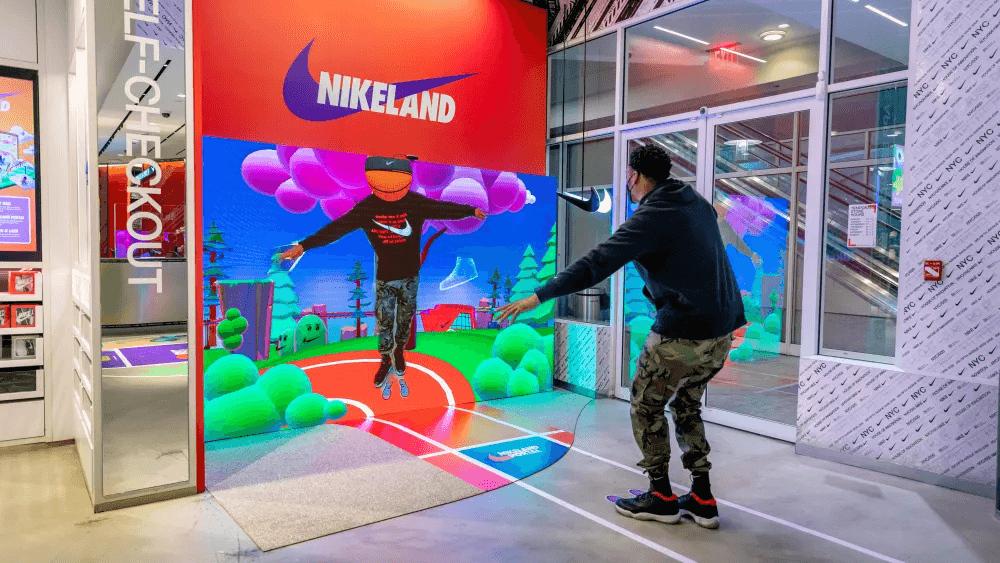Mar 24, 2025
How Tech is Revolutionizing The Sneaker Industry Part 1 of 2: : AR and Blockchain

The sneaker industry has undergone a tech-driven evolution over the past five years, with major brands like Nike, Adidas, and Puma leveraging emerging technologies to redefine how consumers interact with products. Augmented reality (AR) and blockchain have emerged as transformative tools, enabling immersive shopping experiences and ensuring authenticity in a market plagued by counterfeits. This article explores the impact of AR and blockchain on the sneaker industry, supported by data visualization and insights from industry leaders.
Augmented Reality: Elevating the Sneaker Shopping Experience
AR technology has revolutionized the shopping experience by bridging the gap between physical and digital retail. Leading brands have embraced AR to deliver immersive experiences that enhance customer satisfaction and drive sales.
Virtual Try-Ons
Virtual try-ons allow consumers to visualize sneakers on their feet using smartphone cameras or AR-enabled apps. This technology addresses common pain points in online shopping—such as finding the right fit—and has significantly increased conversion rates.
- Nike Fit: Launched in 2019, this AR-powered sizing tool uses computer vision to measure foot dimensions within 2 millimeters. Nike reported reduced return rates and improved customer satisfaction as a result.
- Adidas Ultraboost AR Lens: In partnership with Snapchat, Adidas debuted an AR lens in 2018 that allowed users to virtually try on Ultraboost sneakers. This campaign reached millions of younger mobile consumers.
AR Marketing Campaigns
AR has also been used to create buzz around product launches:
- Nike SNKRS App: The "Momofuku" Dunk release required users to scan a menu image to unlock an AR version of the shoe and purchase it.
- Champs Sports Snapchat Campaign: In 2020, Champs Sports offered AR try-ons for Nike sneakers via Snapchat, achieving an 8% share rate—5× higher than Snapchat’s average for retailer lenses.
Virtual Worlds
Brands are extending their presence into virtual spaces:
- Nikeland on Roblox: Nike created a metaverse playground where fans could play sports mini-games and dress their avatars in Nike gear. By late 2022, Nikeland had attracted over 26 million visits globally.

Nikeland on Roblox
Blockchain: Ensuring Authenticity and Unlocking Digital Ownership
Blockchain technology is addressing two critical needs in the sneaker industry: combating counterfeits and enabling digital collectibles.
Fighting Counterfeits
The counterfeit sneaker market reached nearly $600 billion in 2023, surpassing the value of the legitimate global footwear market. Blockchain offers a solution by providing tamper-proof authentication systems.
- New Balance Realchain: Partnering with Cardano in 2019, New Balance introduced blockchain tokens linked to limited-edition sneakers, allowing customers to verify authenticity via QR codes.
- Nike CryptoKicks: Patented in 2019, CryptoKicks link physical sneakers to digital tokens on Ethereum, ensuring authenticity and enabling digital ownership.
NFTs and Digital Sneakers
Blockchain has opened up new revenue streams through NFTs (non-fungible tokens):
- Nike’s acquisition of RTFKT Studios in 2021 led to successful NFT launches like CloneX avatars and CryptoKicks. By August 2022, Nike had generated $185 million in direct NFT revenue.
- Adidas launched its "Into the Metaverse" NFT collection in December 2021, netting $23 million on the first day.
Impact of AR and Blockchain
Description: This bar chart highlights key metrics showing how augmented reality (AR) and blockchain technologies are influencing conversion rates, marketing engagement, NFT revenues, and counterfeit market size.
Conclusion
AR and blockchain are revolutionizing the sneaker industry by enhancing shopping experiences, ensuring authenticity, and unlocking new revenue streams through digital collectibles. As these technologies mature, their integration into retail strategies will become increasingly important for brands seeking to differentiate themselves in a competitive market.